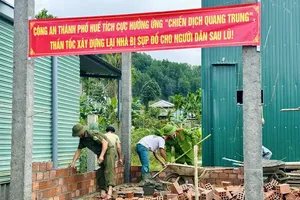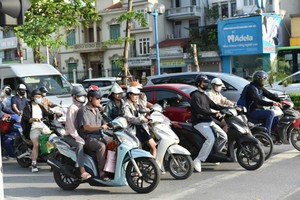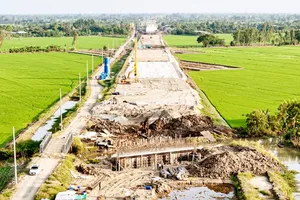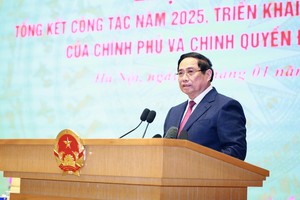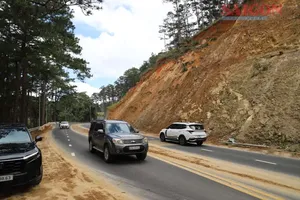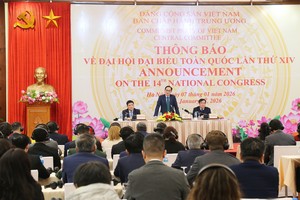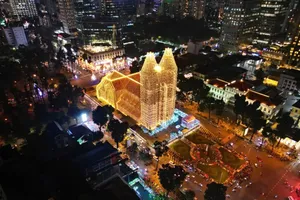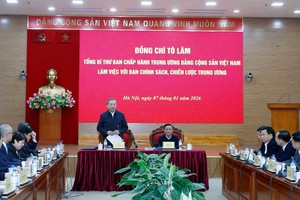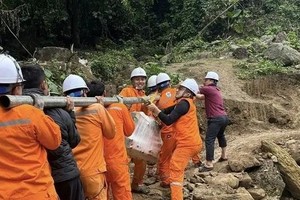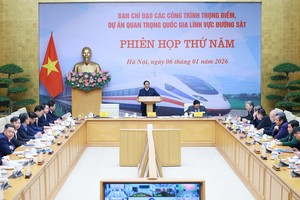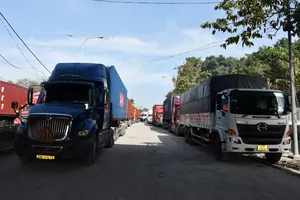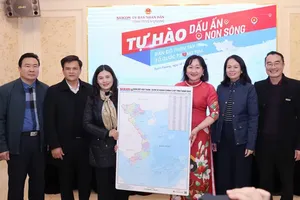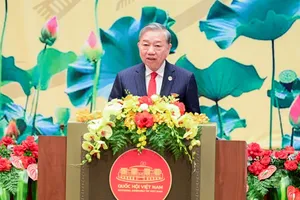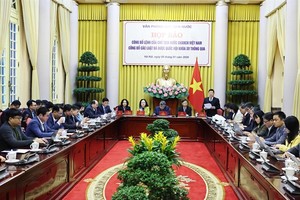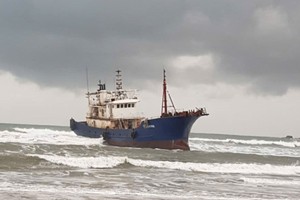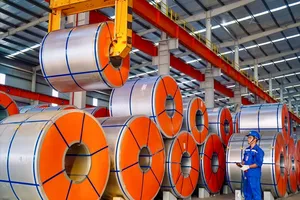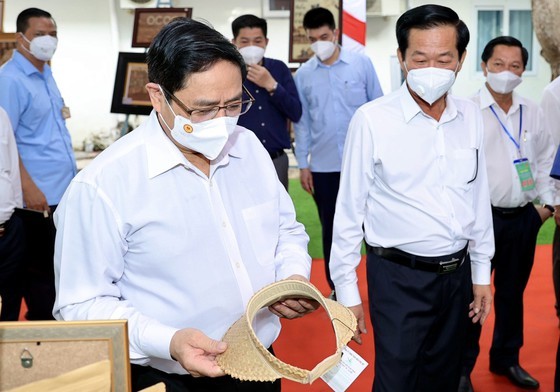 Prime Minister Pham Minh Chinh sees a tourism product in the Mekong Delta (Photo: SGGP)
Prime Minister Pham Minh Chinh sees a tourism product in the Mekong Delta (Photo: SGGP)
The Minister made the statement at a conference to promote sustainable agricultural development in the Mekong Delta chaired by Prime Minister Pham Minh Chinh this morning in Kien Giang Province with the participation of leaders of central ministries, leaders of Mekong Delta provinces, associations, and businesses.
One of the important goals of the conference is to promote the linkage of the Mekong Delta region into a unified entity to promote its potentials and advantages, and to shift the mindset of agricultural production to an agricultural economy.
The Mekong Delta has a natural area of 39,700 square kilometers, accounting for 12.2 percent of the country's area, a population of about 18 million people, accounting for 19 percent of the country's population.
The Mekong Delta is said to be the big center of rice, fruit, and aquaculture production of Vietnam, making a great contribution to the country's agricultural exports. Four key economic regions include Can Tho City, An Giang Province, Kien Giang Province and Ca Mau Province playing an important role in biotechnology transfer, seed supply, logistics services, processing and export.
In 2021, the value added of the total agricultural products of the Mekong Delta region increased by 1.6 percent, accounting for 32.2 percent of the value added of the total products in the whole region and accounting for 31.3 percent of the value added of the country’s total agricultural products.
Thanks to the Party and the State’s investment, over the years, agricultural and rural infrastructure has received attention, contributing to promoting product development and renewing the face of rural areas. Over the past time, roughly 15,000 km of primary and secondary canals in the region’s canal system have been synchronously invested.
A system of irrigation works and dike systems have been formed with water supply infrastructure, fishing ports and storm shelters for fishing vessels. Up to now, 78 percent of rural communes in the region achieve the criteria for rural transport infrastructure while this rate of the country is 79 percent.
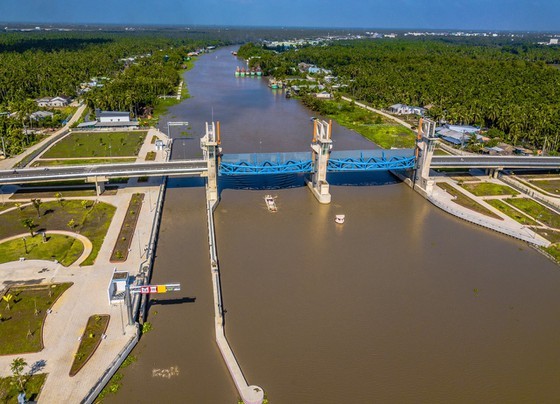 The Mekong Delta pours more investment in construction of canals and irrigation systems (Photo: SGGP)
The Mekong Delta pours more investment in construction of canals and irrigation systems (Photo: SGGP)
In addition to construction of irrigation infrastructure system, provinces in the region also poured investment in disaster prevention, domestic water supply, fishing port system, fishing wharf, storm shelters such as Rach Goc anchorage area in Ca Mau Province, Hon Tre in Kien Giang Province, Kinh Ba in Soc Trang Province, Cung Hau in Tra Vinh Province, Binh Dai in Ben Tre Province, Soai Rap Estuary in Tien Giang Province, fishing ports, fishing wharf Tac Cau, Binh Dai, Ganh Hao, Tran De.
Although the Mekong Delta certainly has the potential and advantages for growth, the region also faces many challenges namely climate change, market price fluctuations and consumption trends, according to Minister of Agriculture and Rural Development Le Minh Hoan.
Regarding climate change, the Mekong Delta is facing a subsidence rate of 1.5-3cm yearly with present groundwater exploitation. According to the average emission scenario, 38.9 percent of the Mekong Delta area is at risk of flooding, of which some provinces are at risk of flooding such as Hau Giang, Kien Giang and Ca Mau.
According to the scenario to 2050 of the International Center for Environmental Management ICEM (2016), 8/13 delta provinces will be flooded at least 50 percent of the area.
The Mekong Delta has several bottlenecks including transport infrastructure, social infrastructure, healthcare, education, climate change adapation infrastructure, transition infrastructure, digital and infrastructure for energy conversion. This bottleneck is being gradually removed, in which the transport sector is very determined to invest in the expressway systems.
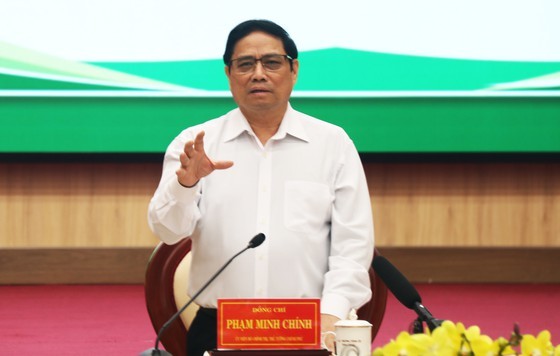 Prime Minister Pham Minh Chinh speaks at the conference (Photo: SGGP)
Prime Minister Pham Minh Chinh speaks at the conference (Photo: SGGP)
The region is focusing on improving the quality of human resources that is the driving force for development. At the same time, social, health, and educational infrastructure must be paid attention to. Last but not least, the region must take heed of regional connectivity, large scale production, and transformation of thinking from agricultural production to thinking of agricultural economic development.
Addressing suggestions for discussion at the conference, Prime Minister Pham Minh Chinh stated that the Resolution of the 13th Party Congress set out the task of building ‘Ecological agriculture - modern countryside - civilized farmers’. The Government, ministries always wondered why the Mekong Delta has not brought into play its full potential and inherent advantages?
Minister of Agriculture and Rural Development Le Minh Hoan said that thanks to its geographical location and natural conditions, the Mekong Delta has become a concentrated agricultural production area, soon approaching the market economy. Agriculture accounts for a high proportion, compared to the national average, supplying a variety of rice, fruit and aquatic products, making an important contribution to the export turnover of agricultural products. However, for many internal and objective reasons, the delta has not taken off as expected.
The Ministry of Agriculture and Rural Development will open the Agricultural Coordination Office in the Mekong Delta in Can Tho City to support the coordination of production planning, standardization of material areas and connect enterprises that will invest in high-tech agriculture and deep processing.
Furthermore, the office will connect commodity chains and help to improve the quality of cooperatives. Additionally, it will form a link between production and consumption, coordinate the operation of irrigation works to ensure synchronization of the whole system, support the digital transformation of agriculture at the regional level.
In addition, it will also support the coordination of international funded projects of inter-provincial and inter-regional nature, harmoniously combining construction investment and non-structural solutions, Minister Le Minh Hoan said.
